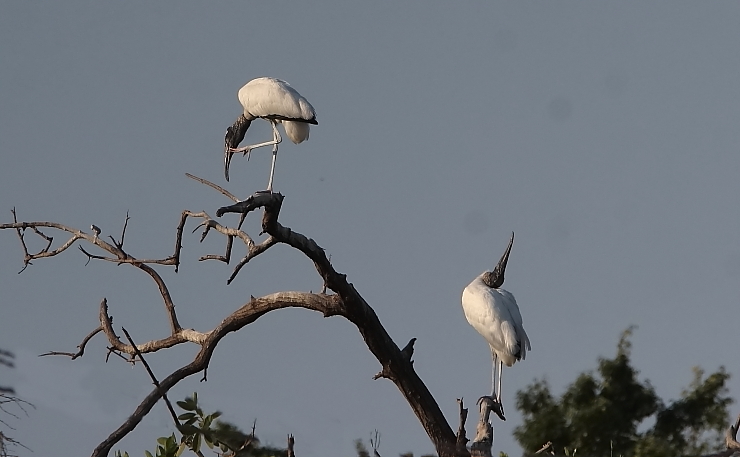
In my last post, I introduced the Mexican tourist center of Ixtapa/Zihuatanejo, and talked about some birds seen along a bicycle path that heads uphill from Ixtapa’s hotel zone. I was very happy with this route, but wanted to take my remaining time searching for a marsh or beach with water-loving birds. The bicycle path supposedly leads to a beach named Playa Linda (Lovely Beach), but the route turned out to be too long for me to walk to, round-trip, in the tropical heat, so I returned to my parked car and attempted to find someplace marshy by driving. Eventually, I ended up at a river’s mouth called Playa la Barra (Sandbar Beach).

By then, it was almost noon, so the best birding hours were well past. Still, the beach was lovely, with only a few Mexican tourists present, and the few birds around seemed unbothered by my presence. I did not see anything too special, but it was still a good time.
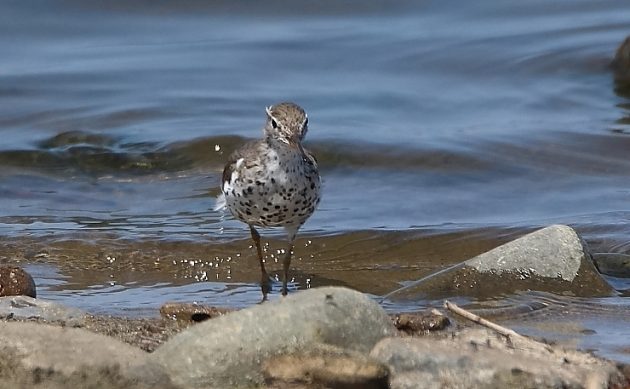
Spotted Sandpipers are winter migrants down here, so I rarely see them with their namesake spots. But this one certainly had plenty.
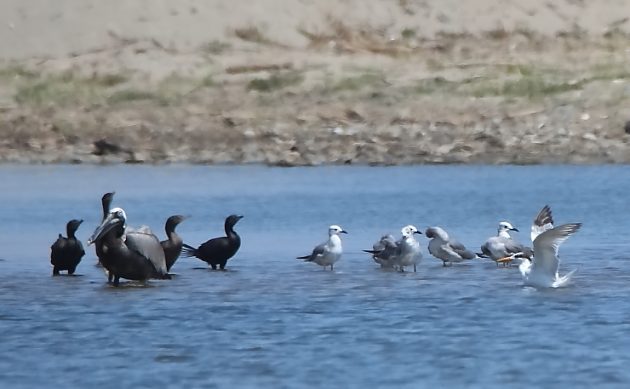
Laughing Gulls and Neotropic Cormorants are reasonably common in Mexico’s highlands. But I have to travel to the coast to see a Brown Pelican or Elegant Tern.
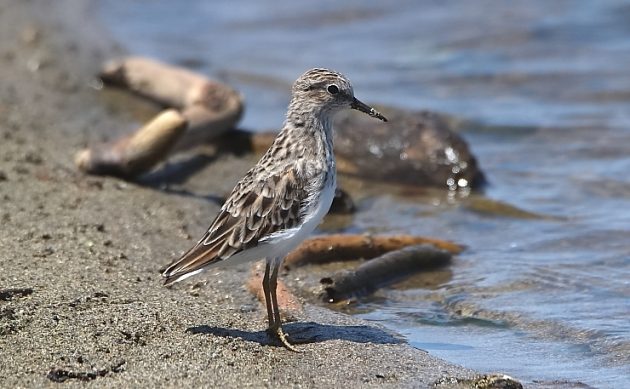
I see hundreds of Least Sandpipers in any given winter. But they are rarely so trusting as this little fellow.
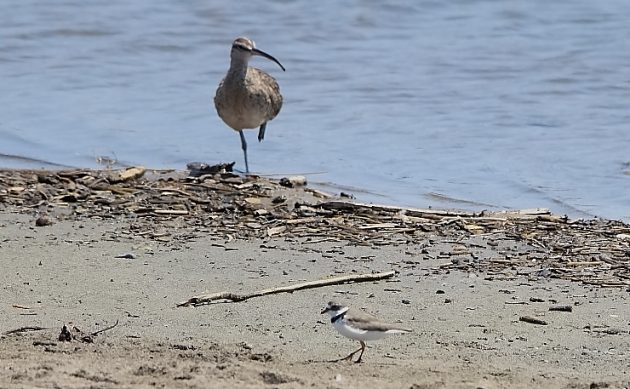
I also see a handful of Semipalmated Plovers each winter. Whimbrels? Not so much.
On my way back to the hotel, I noticed that Wood Storks were nesting, right beside a busy parking lot. That place could be worth a second visit… if only I had another morning available.
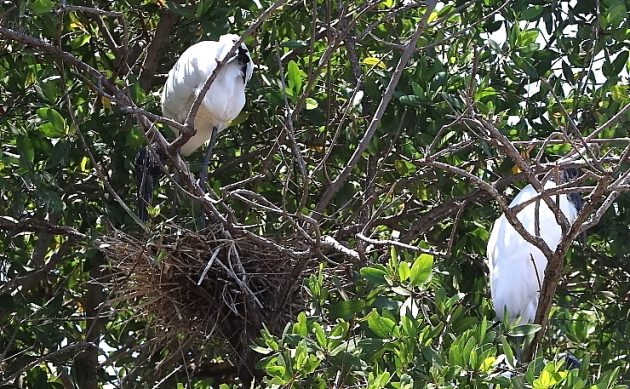
The opportunity arose when my wife suggesting we stay in Ixtapa one more day, to spend time with our daughter, son-in-law and, especially, grandchildren who had also gone down to the wedding. Knowing me well, she tempted me with a few more hours of birding on the extra morning. I crumbled.
On my way to my target spot, I had to go get gasoline for the trip home. Just short of the gas station, I noticed a concrete drainage ditch with enough water, dirt, and plants to attract a large number of Blue-winged Teals and shorebirds. At a good distance, I saw what I believed to be a White-fronted Ibis, a common species uphill. But, when I got home, my grainy photos revealed a Limpkin — my fourth, and final, lifer for the trip. And that is why I rarely bird without my camera.
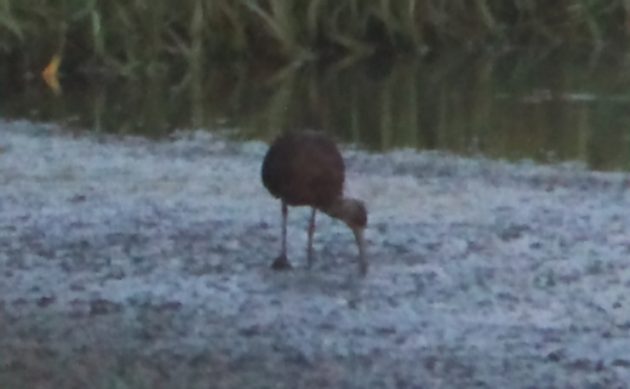
At any rate, I had chosen to go to a place listed on the map as a “cocodrilario“, a place for crocodiles. Crocodiles need a marsh, right? And I wanted to bird a good marsh in Ixtapa.
But when I arrived at the site, it turned out to be exactly where I had already seen the Wood Stork nests, two days before. And the Wood Storks were still putting on quite a show, posing, carrying nesting materials, and building their nests.
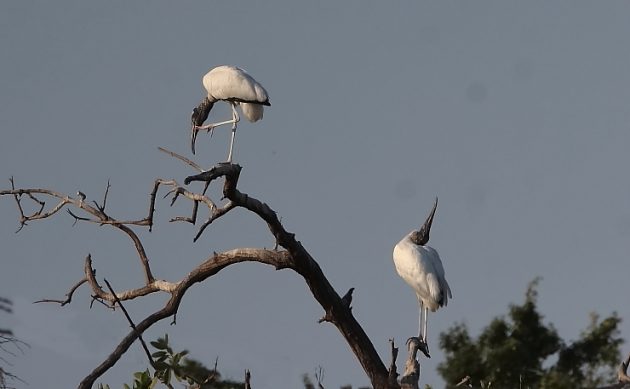
Not only that, but several Roseate Spoonbills flew close overhead. One allowed me my first, and long-desired, decent photo of this gorgeous species.
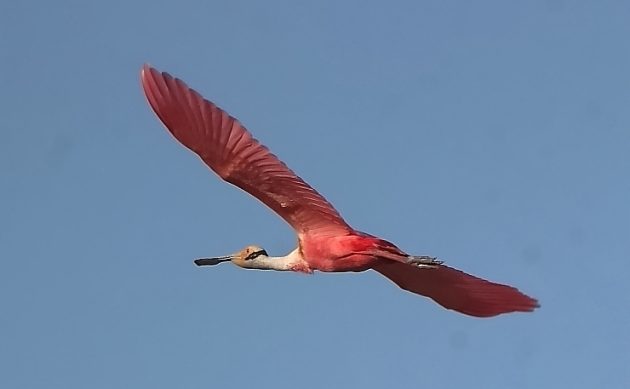
Should you ever wish to visit this spot, but have a healthy fear of being eaten by a crocodile, you should know that the site’s namesakes stay behind a sturdy fence. I suspect they are actually a captive population, as I saw no apparent access to the wider habitat.
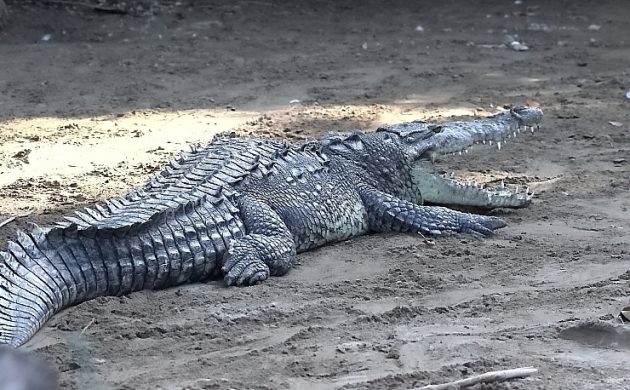
This was also not the vast marsh I had hoped for. But the beach birds did put on a show.
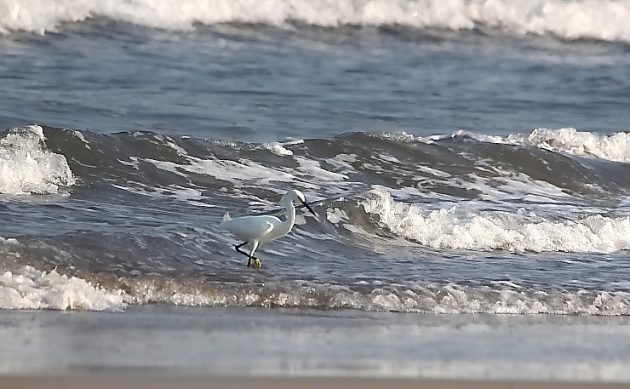
It seemed odd to think of a Snowy Egret as a “beach bird”. But there it was.
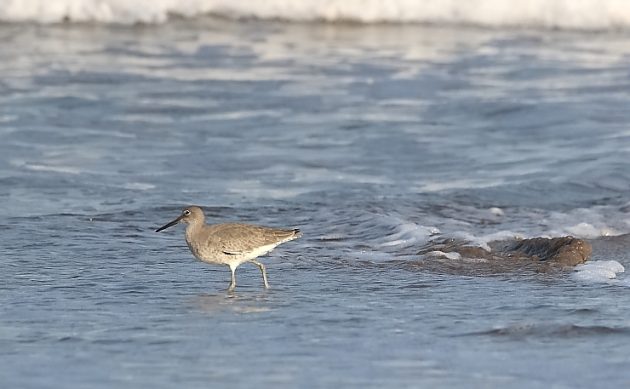
A single Willet seemed to have come just for a long photo session. I photographed it, and another Spotted Sandpiper, until I tired of doing so.
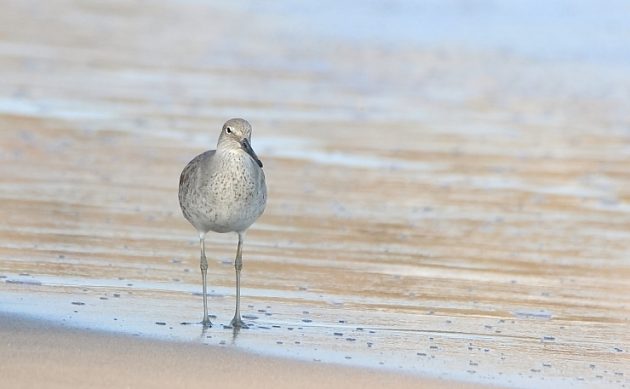
Face the camera.
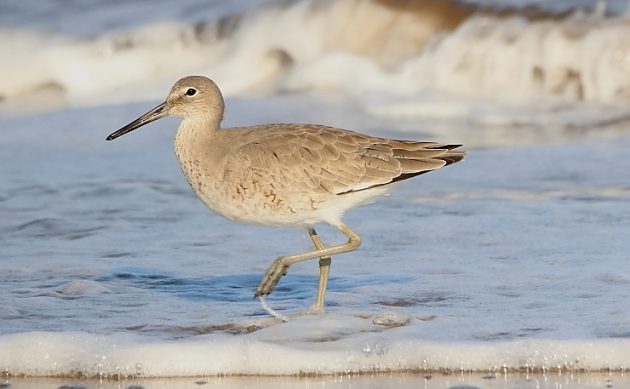
Now, in profile.
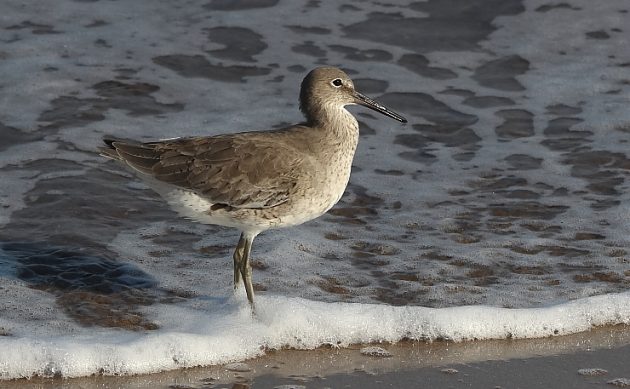
It was still there on my way back to the car.
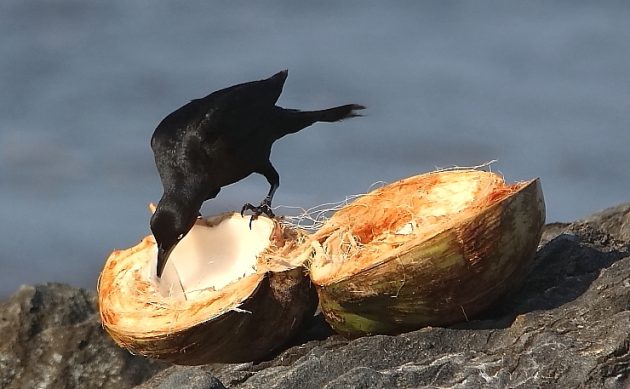
A Great-tailed Grackle showed that it knows just what to eat a the beach.
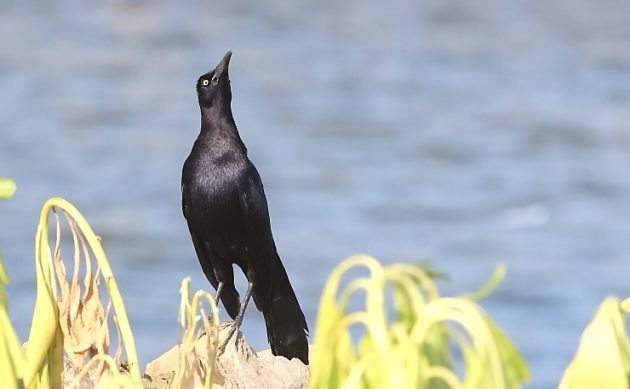
While another showed exactly what it thought of me. Not much, apprently.
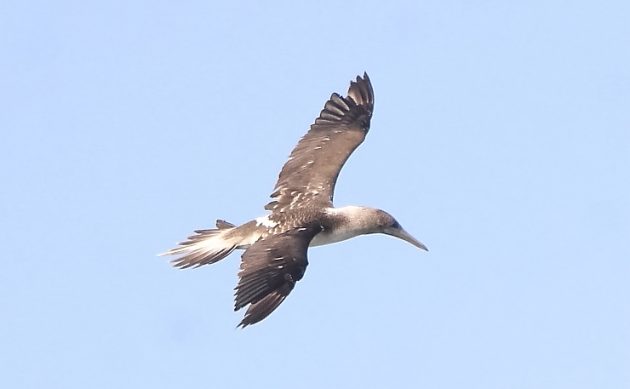
And several birds diving into the ocean proved that the Boobies I had been seeing were, in fact, Blue-footed.
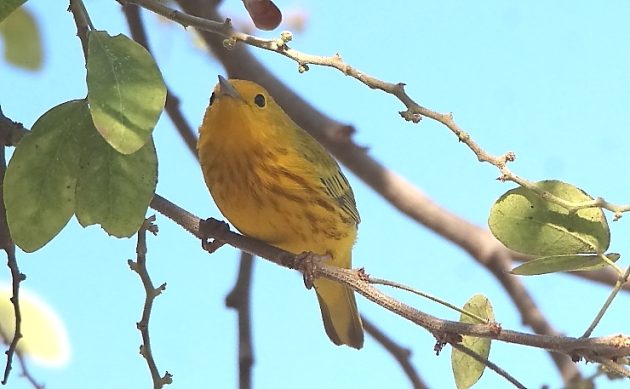
While not exactly a shorebird, the Yellow Warbler does seem to like a good shore. And I like Yellow Warblers.
In summary, I can’t say I recommend only coming to Mexico for its beaches, as many foreign tourists do. But birders who do visit our beach destinations can certainly see many wonderful birds here. Just make sure you leave your hotel and explore a bit.











Leave a Comment